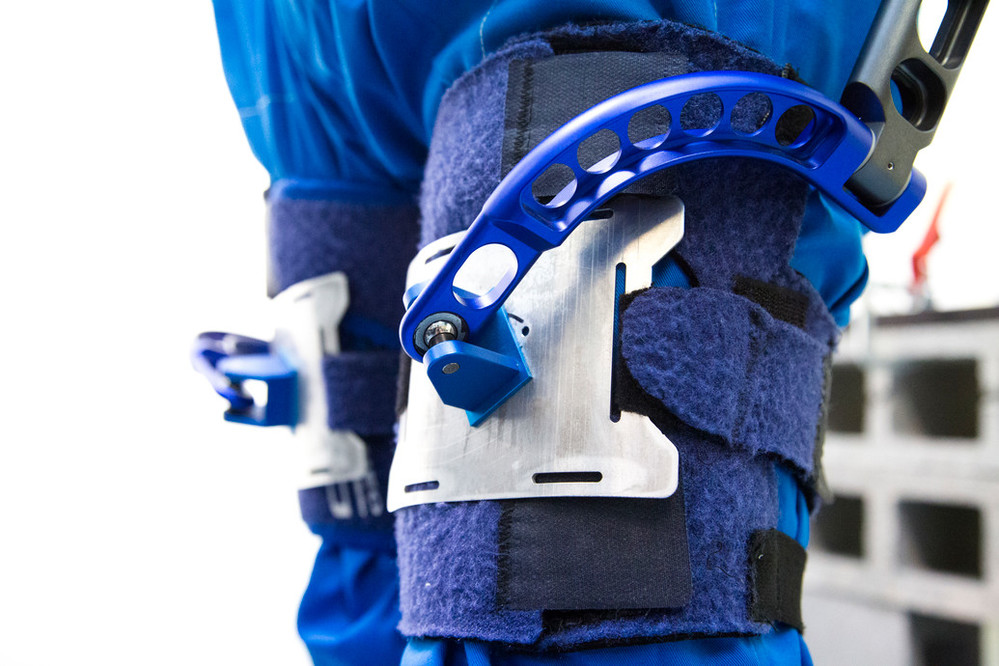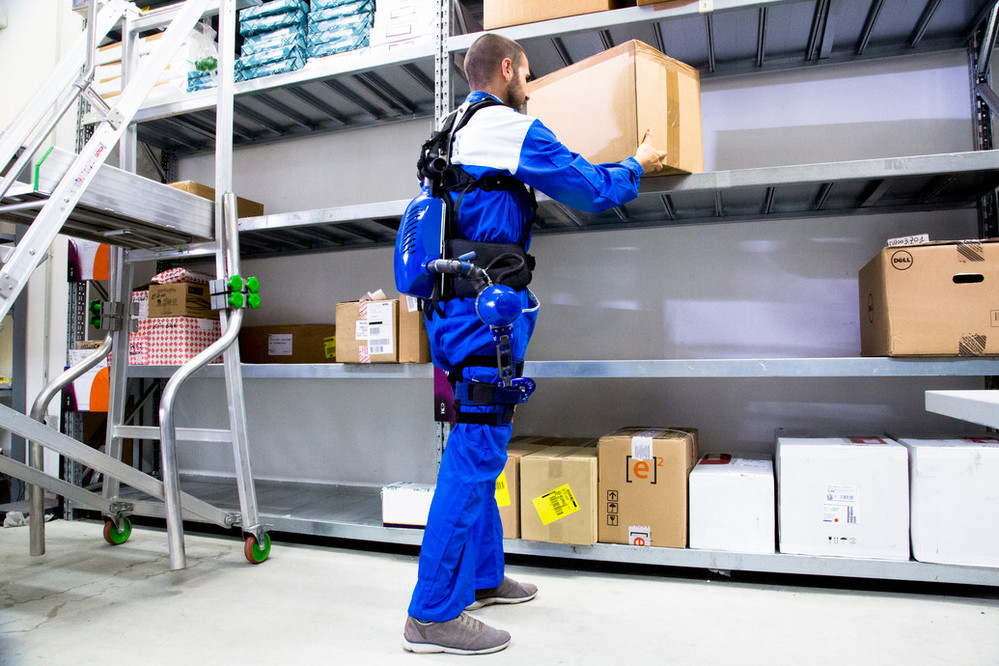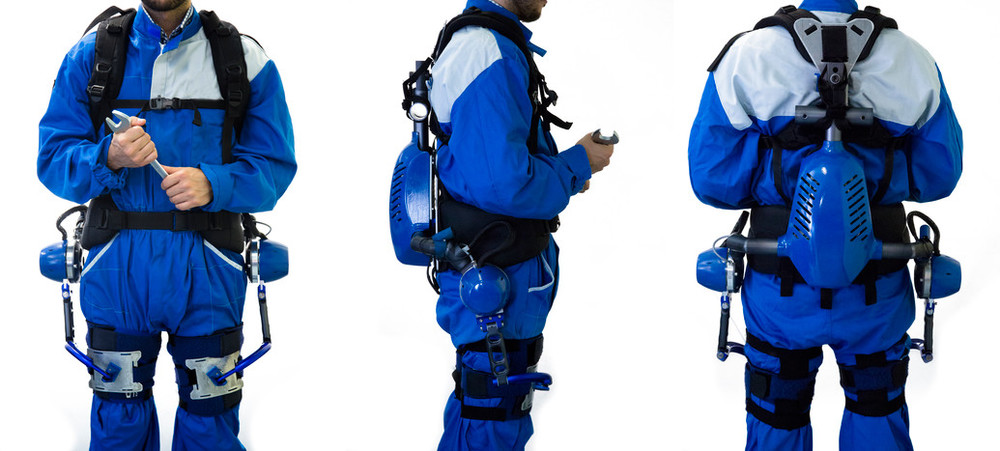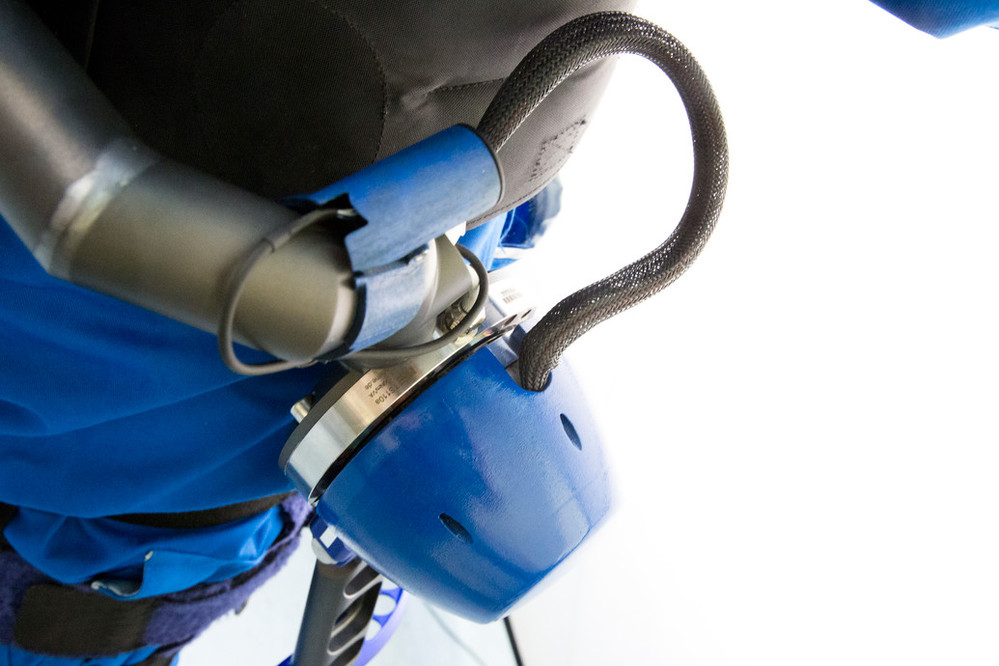The objective of these devices is to assist people during physical activities. Target users span from industrial workers, aiming to reduce musculoskeletal loads and the associated risk of injuries, to people with movement impairments due to conditions such as stroke or spinal injury, aiming to enable to carry out activities of daily living.

Industrial applications
The Robo-Mate EU project aimed at the development of wearable exoskeletons to assist operators in industry during manual handling tasks and in awkward positions. Within the context of this project, our group has developed a wearable robotic back support (Robo-Mate Trunk Module). Its goal is to offload the user’s low back, thereby reducing the associated pain and risk of injury.
In our recent collaboration with INAIL (National Institute for Insurance against Accidents at Work) we are developing a new generation of industrial exoskeletons for a wide variety of industrial applications, such as automotive, manufacturing, maintenance, construction, agricultural, etc.
From a research perspective, our group focuses on technological advances that will enable exoskeletons to succeed in real-life applications.
High-Performance Actuation
Drawing from extensive expertise at our department in this area, we attempt to select and design robotic actuators to match the performance of human joints during the target tasks. The importance of this aspect lies in the need to keep weight and power consumption to a minimum while producing substantial physical assistance and promoting comfort.
Assistive Strategies and User Interfaces
A key aspect of an exoskeleton is the ability to assist in accordance with the intent of its user. Effective assistive strategies may combine relevant measurements from the environment with biosignals from the user. Our group strives to maximise the deployability of the developed devices in real-life scenarios. To this end, our approach considers the invasiveness and costs associated to the physical interfaces. Additionally, we seek to inform the development of our devices by frequently evaluating them in user studies.
Medical applications
Current exoskeletons use commonly a rigid structure with traditional actuation systems. Nevertheless, the development of new robotic technologies using "smart materials" allows to build soft and light systems, which can improve the wearability and acceptability. We are currently exploring these new technologies in the XoSoft EU project, a lower limb soft wearable assistive device to assist people with mobility problems (elderly people, post stroke patients, iSCI patients, etc.)
Energy Efficient Soft Actuation
A soft an light assistive wearable device can be only realized with a highly efficient actuation system. Several strategies can be used to improve the energy efficiency, such as energy harvesting, compliant elements for mechanical energy accumulation (springs or elastic cords), ratchets and clutches. Our group is working toawrds novel solutions to address this challenge.
Events
Design and Assessment Wearable Robotics (DAWR): Bridging the Gap Between Existing and Desired Evaluation Outcomes - WORKSHOP at EMBC 2025 Conference
July 16th 2025 at 47th Annual International Conference of the IEEE Engineering in Medicine and Biology Society (EMBC 2025), Copenhagen - Denmark.
Visit the website.
Projects
INAIL - Sistemi Cibernetici Collaborativi - Esoscheletri
The collaboration with INAIL (Italian Workers' compensation Authority) will allow the development of a new generation of industrial exoskeletons for a wide variety of uses: automotive, manufacturing, maintenance, construction, agricultural, etc. The prototypes are being designed based on User Centred Design principles to ensure a complete integration with the industry, working in close collaboration with end users during all the design and development process.
XoSoft
XoSoft as a project focuses on the development of a soft biomimetic exoskeleton to assist people with mobility impairments. This project will deliver a modular exoskeleton for the lower limb made of soft materials as an assistive device for persons with low to moderate mobility restrictions. The development of exoskeletons using soft materials is an innovative field with many relevant potential applications. Approaches allowing more compact, low weight and comfortable solutions are strongly needed. A small number of important developments in this respect have been made, which will enable the development of soft exoskeletons.

XoSoft will help increase mobility and improve health and quality of life of people with walking impairments. The needs of multiple stakeholders have been included in the design process. The users groups who are actively involved and whose needs are specifically detailed in the design specifications are: Primary Users (i.e. elderly, stroke patients, incomplete SCI), Secondary Users (i.e. doctor, physiotherapist, carer, family member) and Tertiary Users (i.e. social welfare, health insurance, policy makers, advocacy groups).
The XoSoft consortium is a well-balanced combination of partners with complementary knowledge areas and skills. The project comprises 9 partners from 7 European countries, including key players from industry and academia. Each partner will address specific challenges and deliver high quality results, leading to the successful accomplishment of XoSoft.
- Fondazione Istituto Italiano di Tecnologia, IT (Coordinator)
- Agencia Estatal Consejo Superior de Investigaciones Científicas, ES
- Stichting Saxion, NL
- University of Limerick, IE
- Zurcher Hichschule fur Angewandte Wissenshcaften, CH
- Roessingh Research and Development BV, NL
- Accelopment AG, CH
- Waldkrankenhaus St. Marien GGMBH, DE
- Össur HF, IS
Robo-Mate
Robo-Mate is a user-friendly intelligent wearable human-robotic exoskeleton for manual handling work in different industries. Prototypes of its three modules have been tested in the lab and are now undergoing tests at our industry partners. The exoskeleton will be deployable within half a day and not require task specific programming.
The project comprises 12 partners from 7 European countries, including key players from industry and academia. The consortium is a partnership of leaders in complementary fields of expertise, creating a unique formula to tackle critical challenges in the development and demonstration of exoskeletons for industrial application.
- Zurich University of Applied Science, CH (Coordinator)
- accelopment AG, CH
- Centro Ricerche Fiat S.c.p.A., IT
- Compa S.A., RO
- Fraunhofer-Gesellschaft zur Förderung der Angewandten Forschung e.V., DE
- Güdel AG, CH
- Indra SAS, FR
- Fondazione Istituto Italiano di Tecnologia, IT
- MRK-Systeme GmbH, DE
- Ropardo SRL, RO
- The Netherlands Organization for Applied Scientific Research, NL
- University of Limerick, IE
Advanced Robotics



